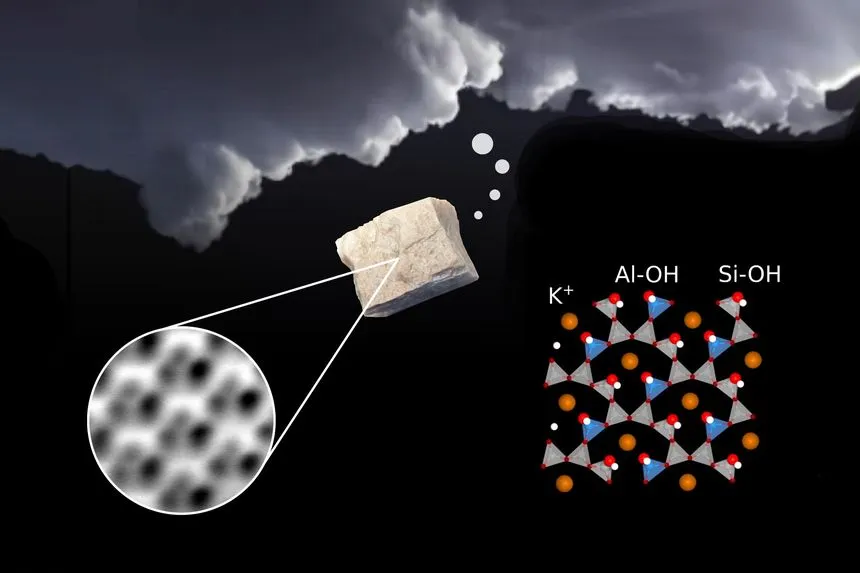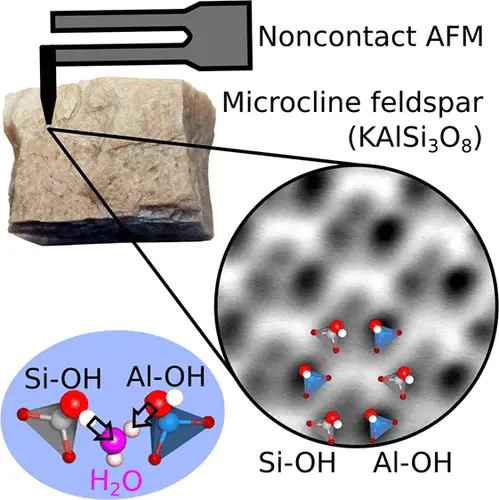Scientists have discovered the secret behind one of the most effective cloud-makers in the atmosphere: feldspar. Feldspar is a common mineral that makes up about half of the Earth’s crust and is also found on other planets. It has a special property that allows it to create ice crystals from water vapor very quickly and easily, which is essential for cloud formation.

The researchers from Vienna University of Technology (TU Wien) in Austria used a special microscope to observe how water molecules interact with feldspar dust at an atomic level. They found that feldspar dust has tiny pockets of water inside its crystal structure, called inclusions.
When feldspar dust is split by a sharp object, such as a rock or a laser, some of this water vapor comes out and attaches to the surface of the feldspar. This creates a layer of hydroxyl groups (OH), which are molecules that have an oxygen atom and a hydrogen atom bonded together.

These hydroxyl groups act as anchors for water molecules to stick to feldspar dust and freeze into ice crystals. This process is called nucleation, and it is the first step in cloud formation.
“We split a feldspar piece in a vacuum chamber for a clean surface. Surprisingly, the surface images differed from expected theories,” says Giada Franceschi, first author of the study recently published in J. Phys. Chem. Lett.
“Under the microscope, you don’t see the feldspar surface itself but a surface covered with hydroxyl groups,” Franceschi says. “In nature, the feldspar surface is also covered with such a hydroxyl layer.”
The researchers also confirmed their findings by running computer simulations of chemical reactions between water molecules and feldspar surfaces. They found that the hydroxyl groups on feldspar dust are arranged in such a way that they create strong bonds with water molecules very easily and quickly. This explains why feldspar is so good at nucleating ice crystals, even at temperatures above freezing.
“The bond is established very easily and quickly, and it is also very stable,” says physicist Ulrike Diebold, from TU Wien. “To remove the hydroxyl layer from feldspar, one would have to heat it to a high temperature.”
The study, published in the journal Nature Communications, solves one of the mysteries of feldspar that had puzzled scientists for a long time: why it is so effective at creating clouds. Clouds play a crucial role in regulating the Earth’s climate, as they reflect sunlight and trap heat. Understanding how clouds form and what factors influence them is important for predicting weather patterns and climate change.
The researchers hope that their study will inspire further research on the role of feldspar and other minerals in cloud formation and atmospheric chemistry. They also suggest that feldspar could be used as a natural and environmentally friendly way to enhance cloud formation and precipitation, which could help mitigate droughts and water shortages in some regions of the world.
Download: Original publication

